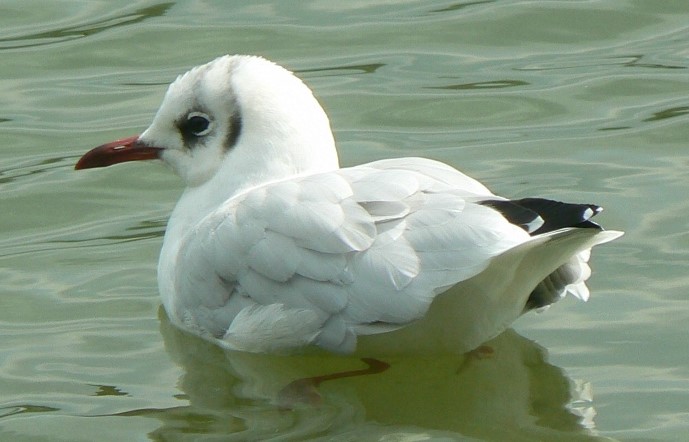
[080] Chroicocephalus ridibundus, Black-headed Gull
Introduction
Chroicocephalus ridibundus, the Black-headed Gull, is a small gull seen over most of Europe where it is either resident or migratory. Like most gulls it is mostly white but its breeding plumage has a dark brown hood.
Taxonomy
Kingdom – Animals
Phylum – Chordates
Class – Aves (Birds)
Order – Charadriiformes (Waders and gulls)
Suborder – Lari (Gulls etc., Skuas, Guillemots etc.)
Family – Laridae (Gulls, Terns and others)
Genus – Chroicocephalus
Scientific Name – Chroicocephalus ridibundus
Name
All gulls used to be in the genus Larus. About fifteen years ago the smaller ones were split off into the new genus Chroicocephalus, from Greek meaning ‘coloured head.’
Names are often inaccurate and it’s hard to find names for lots of gulls, which are mostly all white. So Chroicocephalus ridibundus with its brown hood is called Black-headed. There is another species, found only to the South of South America, which has an almost identical brown hood – it is called the Brown Hooded Gull!
‘Ridibundus’ means laughing, perhaps from its call. There is confusingly another species called the Laughing Gull, which gets its Latin species name from its black tail.
Description
Male and female Black-headed Gulls are identical. The body is mainly white with a silvery grey back, dark red bill and legs (sometimes very dark) and a black tail.

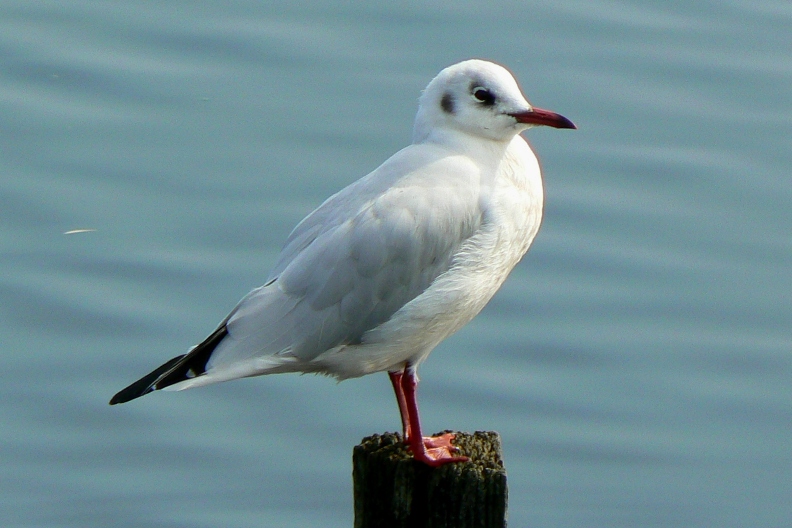
In breeding plumage just over half of the head is a dark brown colour, which may appear black at a distance.
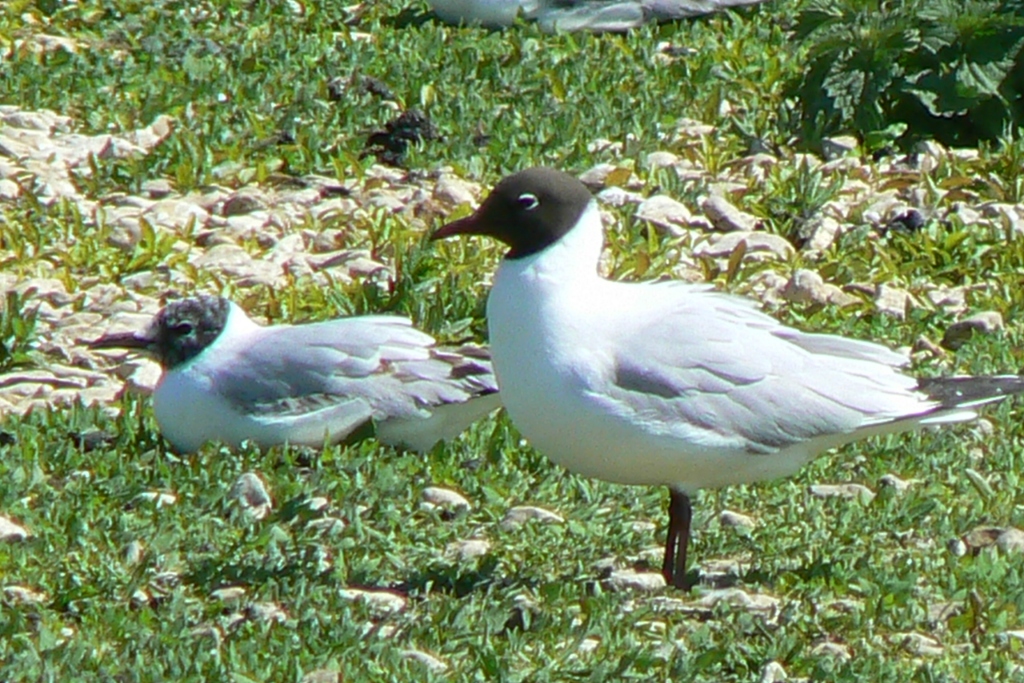

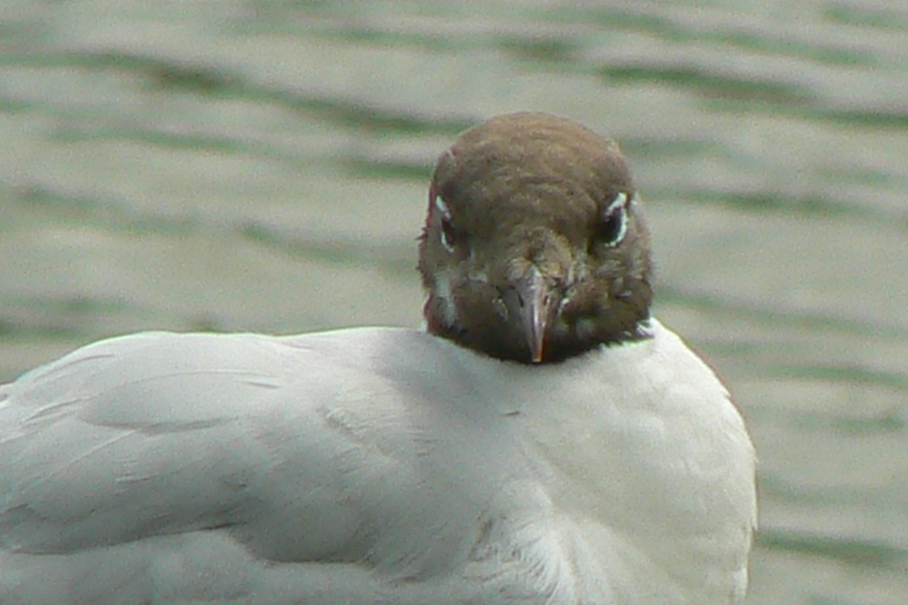
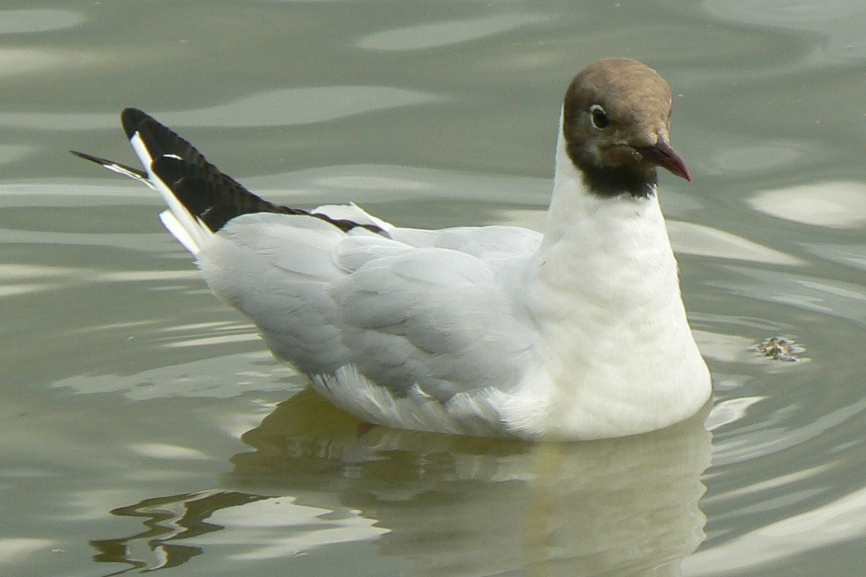
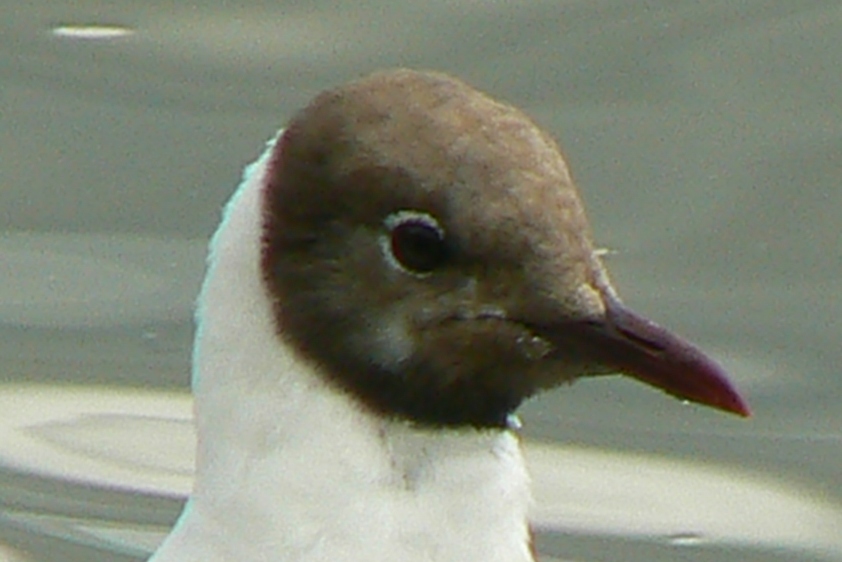
In the winter all that remains of this marking is a dark spot just behind dark eyes. The bill and legs may turn to an orange colour in winter.
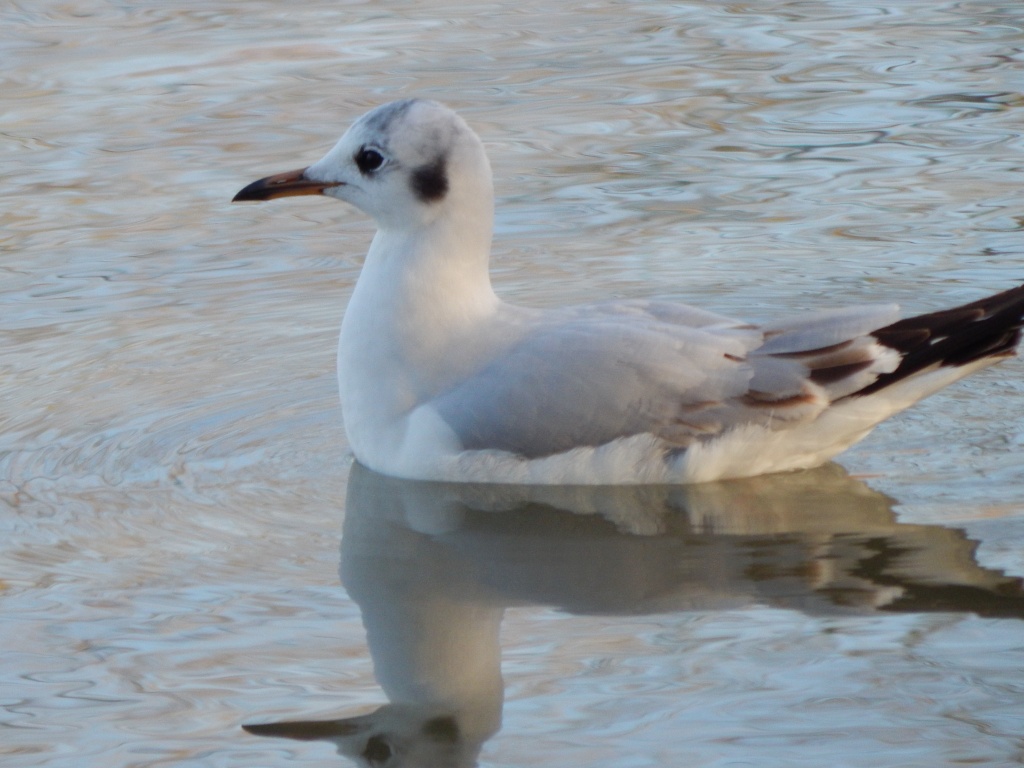

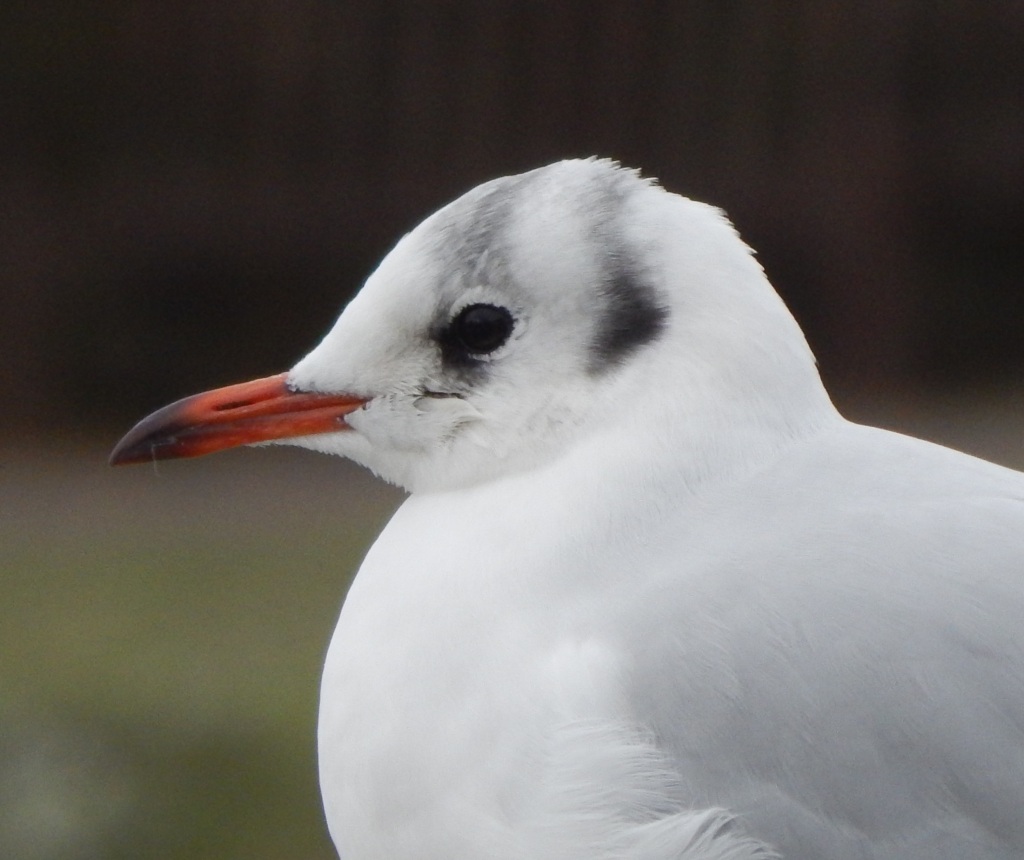

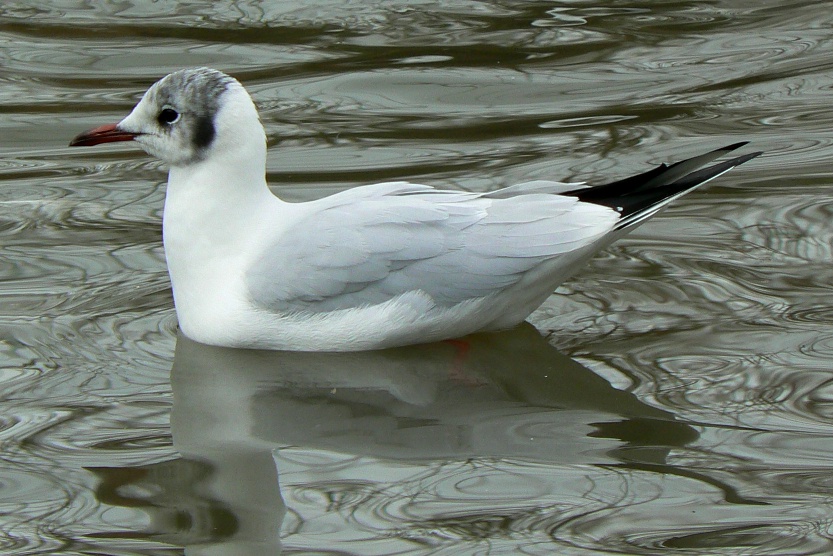
Young birds start as mottled brown and become mostly white with brown markings on their back. For their first winter they retain some brown near the tail, and the bill and legs stay orange.

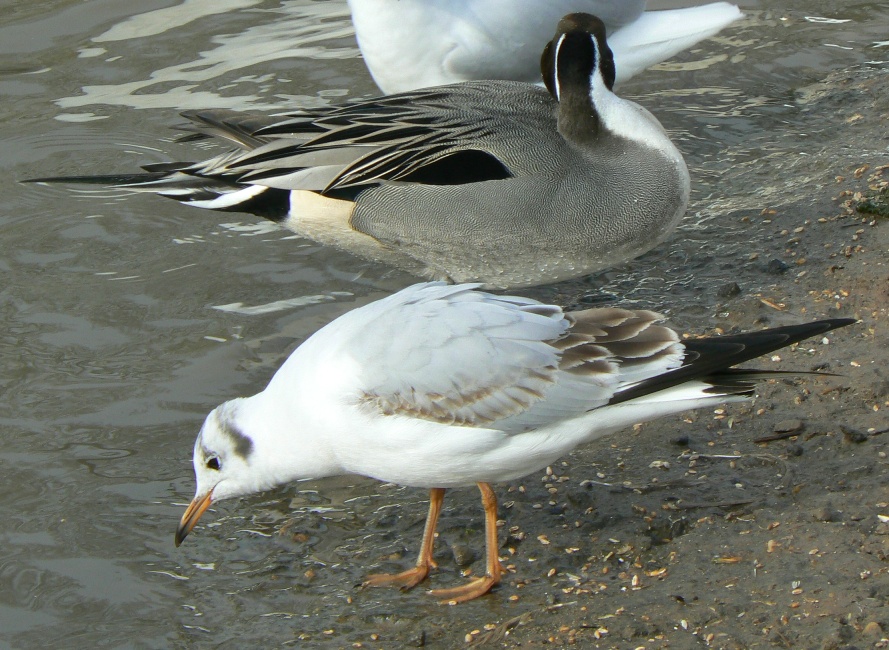
Habitat
Chroicocephalus ridibundus is found over much of Europe but not the South. For most of Britain it is resident. It is gregarious and flocks may be seen on most lakes and sometimes on grassland. It is not averse to humans and will join the melee when ducks are being fed.
They will happily line up on the fence at Slimbridge and will sometimes allow visitors to pass by at close distances.

I could never work out the bird in the next pictures, which I saw at Slimbridge. He has somehow lost all the feathers on his head.


Other Notes
There are lakes locally where they nest regularly on islands, which protect them.
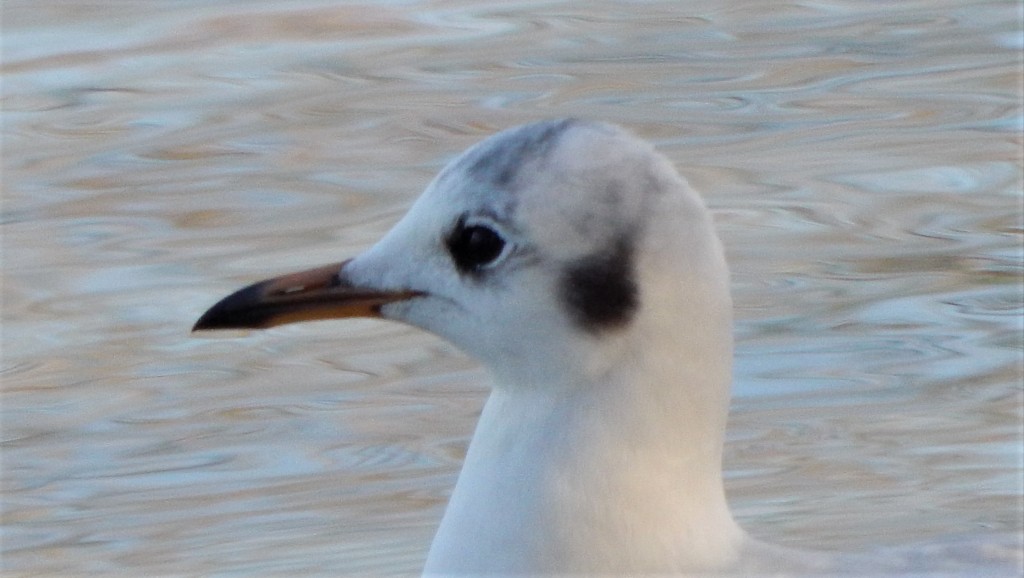
See also
Ichthyaetus melanocephalus, the Mediterranean Gull, is similar in appearance. Generally restricted to the Black Sea and Eastern Mediterranean, it has spread recently and is occasionally seen in Britain, generally hiding in a flock of Chroicocephalus ridibundus. As its Latin name suggests, and unlike the Black-headed Gull, it does actually have a completely black head!
Our larger gulls are [195] the Herring Gull and [196] the Lesser Black-backed Gull – and some rarer species that will be mentioned when we come to these two.
